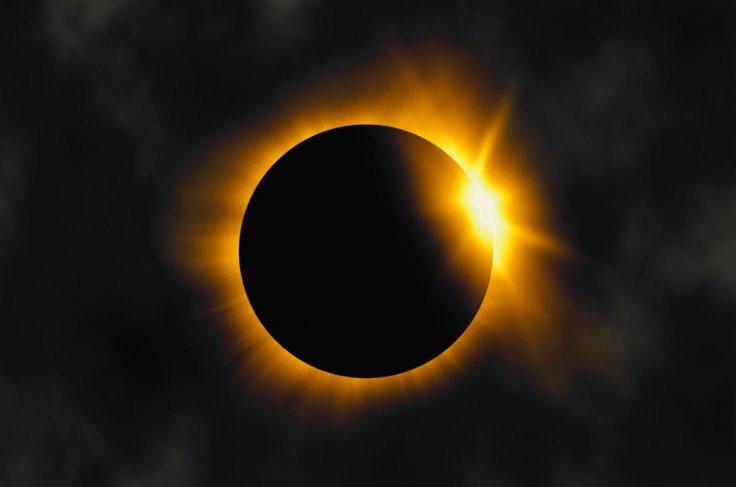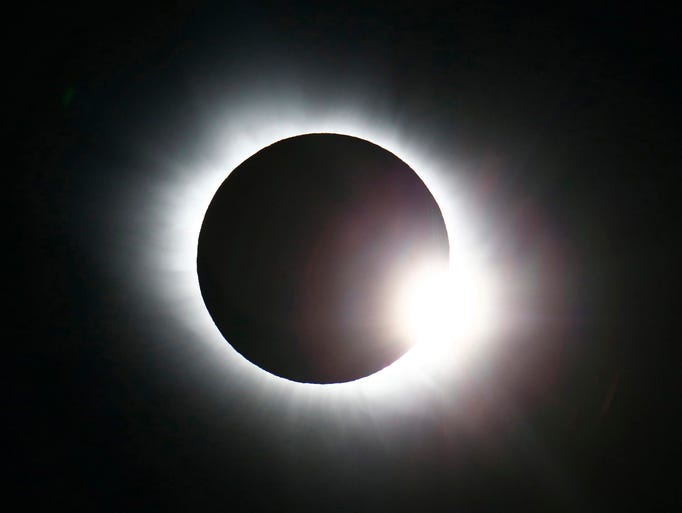The total solar eclipse, which will traverse a significant portion of the continental United States on Monday, April 8, as well as parts of Mexico and Canada, will be one of the most spectacular celestial events in recent memory. The path of the eclipse conveniently intersects Mexico, 15 U.S. states, and touches a small area of eastern Canada.
In all other states within the continental United States, viewers will be treated to a partial solar eclipse, where the moon will partially obscure the sun, creating a fascinating visual of the sun appearing as though a portion has been bitten off. Here are all the key details you need to know.
What is a Solar Eclipse?

A solar eclipse takes place when the Moon positions itself between the Earth and the Sun, obstructing some or all of the Sun's rays from reaching the Earth. This cosmic event relies on the precise alignment of the Sun, the Moon, and the Earth, enabling the Moon to cast a shadow onto our planet.
During this occurrence, the Moon creates two distinct types of shadows.
One result is a partial solar eclipse, which involves the Moon partially covering the Sun, leaving a portion of the Sun visible from Earth.
The other, often considered the most breathtaking, is known as a total solar eclipse. In this event, the Moon completely obscures the Sun, creating a momentary darkness on Earth known as totality.
During totality, the Sun's outer atmosphere, the corona, becomes visible, appearing as a glowing ring of light surrounding the darkened Moon.
Solar eclipses themselves are not that rare, with about two to four occurring each year. However, witnessing a total solar eclipse is rarer. Due to the Earth's vast size, much of its surface is covered by oceans, limiting the visibility of these events for most people.
Monday's solar eclipse marks the first of this century to be visible in all three North American countries: the United States, Canada, and Mexico. This rarity makes it highly probable that this upcoming eclipse will be a once-in-a-lifetime event for many individuals.

Time of the Solar Eclipse
The timing of the eclipse will vary depending on your location. All in all, the eclipse will last two hours. For those in the Eastern time zone, the eclipse will begin entering continental North America shortly after 2:00 PM EDT (7:00 PM BST) and will exit around 3:46 PM.
The path of totality, where the total solar eclipse will be fully visible, starts around 11:07 AM local time in Mazatlán, Mexico, on the Pacific coast.
It will then progress northeastward, crossing over Texas, the southern regions of Oklahoma, Missouri, and Illinois, before continuing through Ohio and along the US-Canada border. Finally, it will end in the Canadian Atlantic province of Newfoundland.
Here is a breakdown of when the total solar eclipse will occur in various cities across the United States and Canada, all in local time:
- San Antonio, Texas: 13:33 Central (19:33 BST)
- Dallas, Texas: 13:40 Central
- Carbondale, Illinois: 13:59 Central
- Cleveland, Ohio: 15:13 Eastern
- Buffalo, New York: 15:18 Eastern
- Burlington, Vermont: 15:26 Eastern
- Montreal, Quebec: 15:27 Eastern
- Fredricton, New Brunswick: 16:33 Atlantic
- Gander, Newfoundland and Labrador: 17:12 Newfoundland time
- Oklahoma City, Oklahoma: 12:33 PM
- Kansas City, Missouri: 12:36 PM
- St. Louis, Missouri: 12:40 PM
- Springfield, Illinois: 12:42 PM
- Indianapolis, Indiana: 12:43 PM
- Houston, Texas: 12:31 PM
- Cincinnati, Ohio: 12:54 PM
- Columbus, Ohio: 12:55 PM
- Detroit, Michigan: 12:58 PM
Mexico
- Mazatlán, Mexico: 11:07 AM
Canada
- Springfield, Illinois: 12:42 PM
- Indianapolis, Indiana: 12:43 PM
- Toronto, Ontario, Canada: 1:00 PM
- Ottawa, Ontario, Canada: 1:04 PM
- Montreal, Quebec, Canada: 1:06 PM
- Quebec City, Quebec, Canada: 1:08 PM
- St. John's, Newfoundland and Labrador, Canada: 3:01 PM

Duration of the Eclipse
The duration of the total solar eclipse varies depending on your location. According to NASA, the total eclipse can range from one minute to four and a half minutes.
In the United States, the longest duration of the total solar eclipse will be at Radar Base, Texas, located right on the US-Mexico border. Here, the total eclipse will last a remarkable 4 minutes and 27 seconds.
Among Canadian cities, the total solar eclipse will be the longest in Sherbrooke, Quebec, where it will last 3 minutes and 26 seconds.
Best Places to Watch the Eclipse
Astronomers in the United States and Canada have meticulously mapped out the precise path of totality for the total solar eclipse. If you find yourself within this path, you should have the opportunity to witness the total solar eclipse.
This path typically spans 115 miles (183 km) in width. Some major cities located along this path include Dallas, Indianapolis, Cleveland, and Buffalo.
Additionally, Niagara Falls will serve as an excellent location to catch the total solar eclipse, regardless of whether you're on the Canadian or American side.
For Canadians, the path of totality includes Hamilton, Montreal and Gander.

How to Watch Online
If you're unable to witness the solar eclipse in person, you can still experience all the excitement on Space.com, thanks to NASA's livestream coverage. The livestream will begin at 1 p.m. EDT (1700 GMT).
You can also stay updated on all eclipse-related content through Space.com's total solar eclipse live blog.
Here is NASA's Eclipse Explorer, where you can input any US address or zip code to discover what will be visible from that specific location: NASA's Eclipse Explorer









